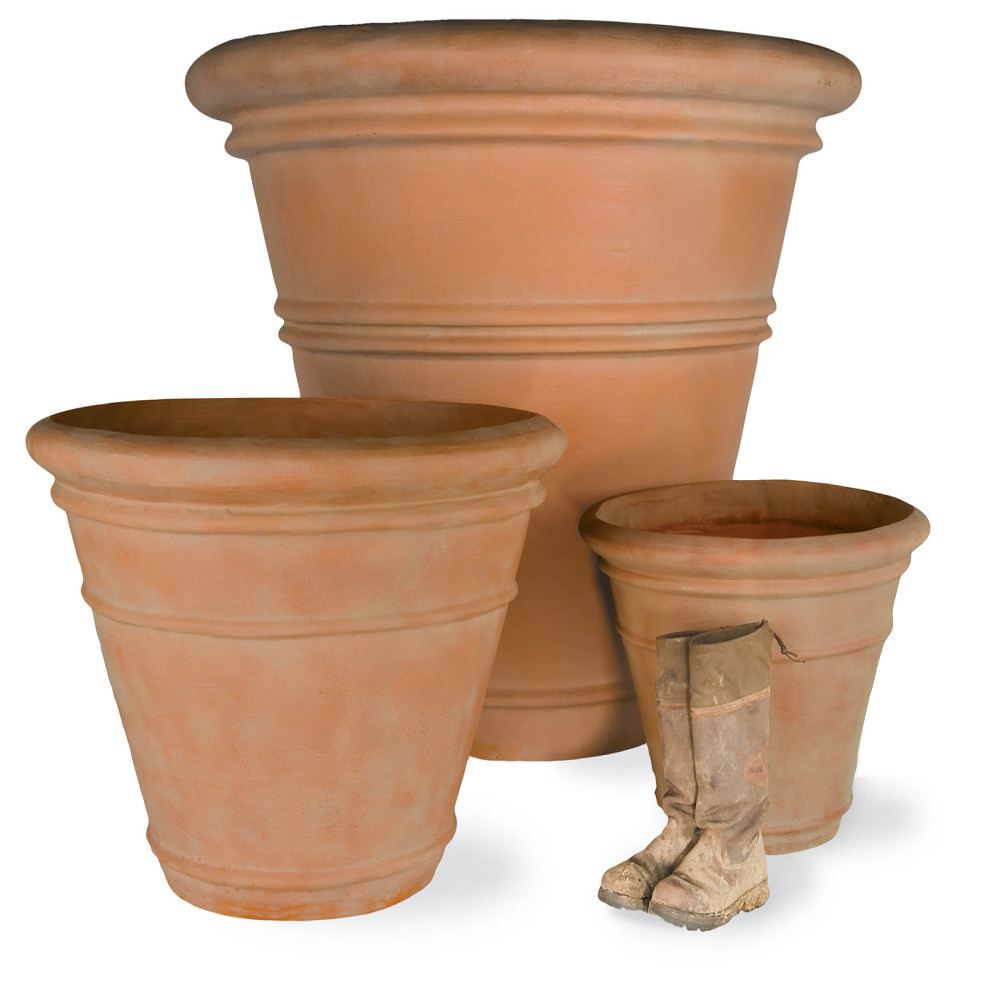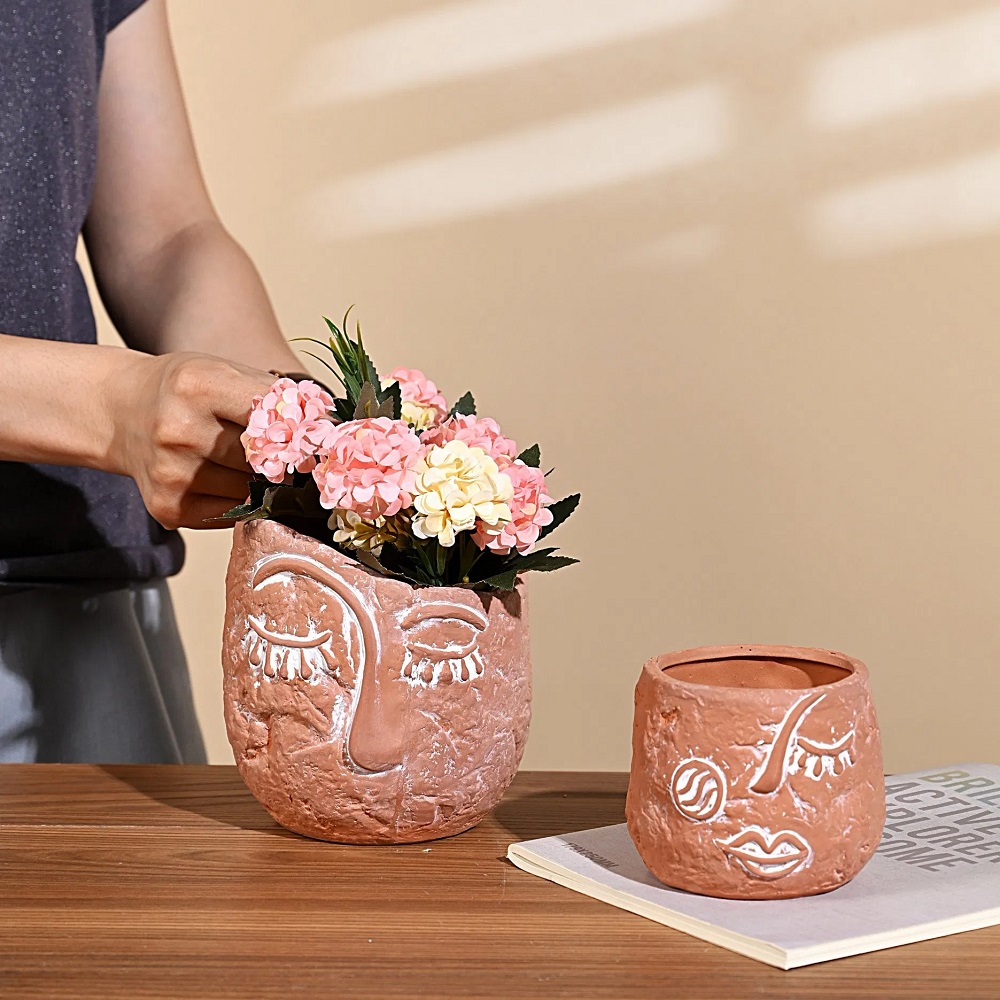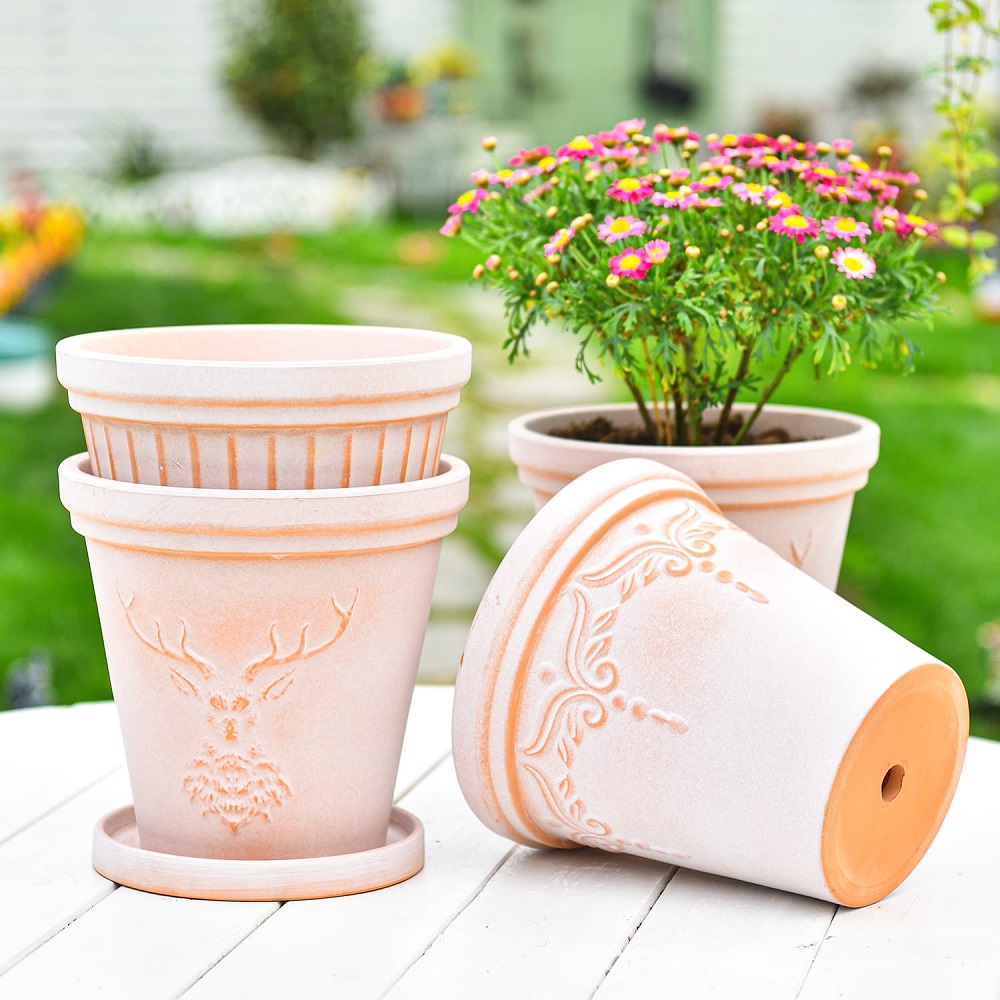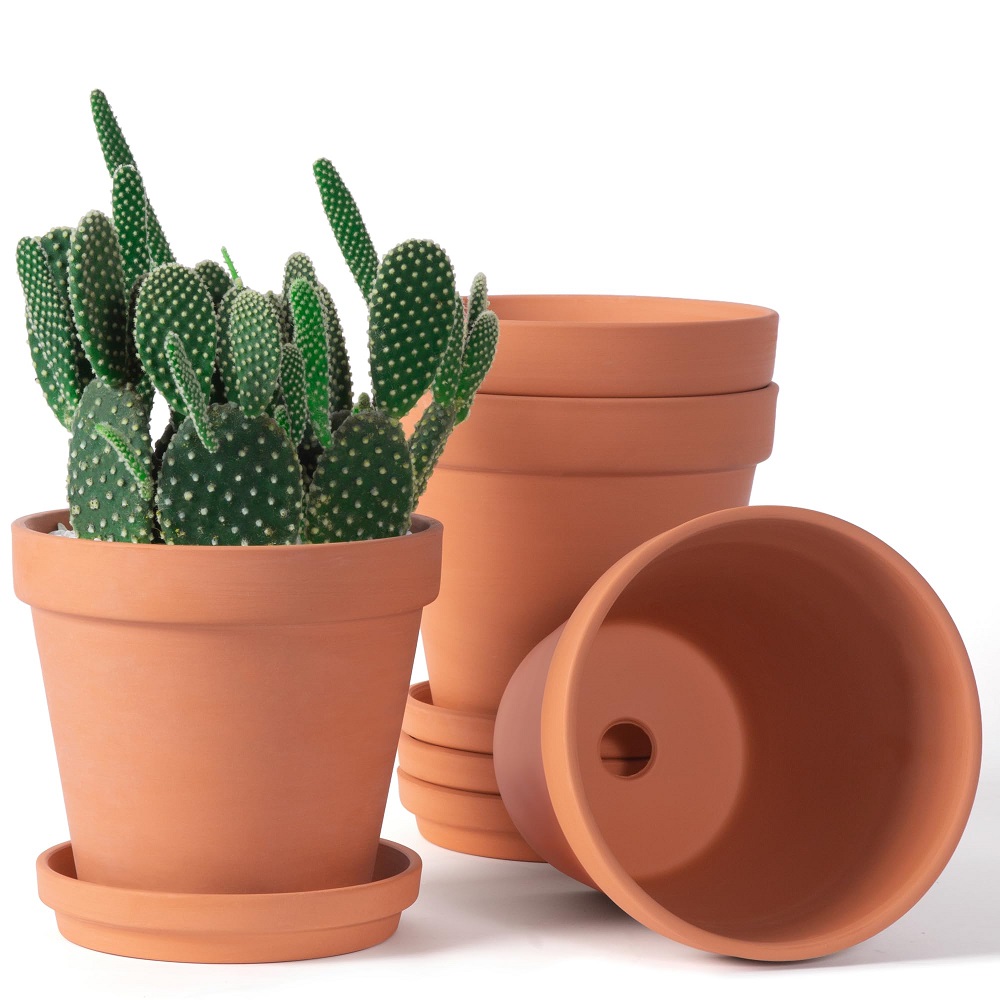Gardening is a rewarding and therapeutic hobby, bringing joy and beauty to our lives. However, to maintain a thriving garden, it’s crucial to keep your gardening tools and pots well-maintained. One of the most significant tools in any gardener’s arsenal is the humble clay pot. While clay pots are beloved for their aesthetic appeal and breathability, they can accumulate dirt, mineral deposits, and algae over time. In this article, we’ll delve into some easy tips for cleaning and revitalizing your clay pots, ensuring they remain in excellent condition for your plants.
Understanding the Importance of Cleaning Clay Pots
Why Cleaning Matters
Cleaning your clay pots is not merely a chore but an essential part of gardening that ensures the health of your plants. Over time, residue from soil, water, and plant matter can build up, introducing harmful pathogens and inhibiting plant growth. Dirty pots can harbor bacteria, mold, or pests, which may transfer to new soil or plants. Moreover, mineral deposits from hard water can restrict the clay’s porosity, diminishing its ability to provide the essential oxygen and moisture your plants need. By cleaning your pots regularly, you not only prolong their life but also create a healthier environment for your plants.
Benefits of Clean Pots
Clean pots also enhance the aesthetic appeal of your garden space. After all, a well-maintained garden looks inviting and vibrant. Removing stains and dirt from your clay pots can revive their color and improve their appearance, making them focal points in your garden or home. Additionally, when you start fresh each season with clean pots, you may notice improved growth and vigor in your plants, thanks to the reduction in diseases and pests.

Gather Your Cleaning Supplies
Essential Cleaning Tools
The first step in revitalizing your gardening gear is gathering the right materials. Cleaning clay pots doesn’t require expensive tools or chemicals; instead, it involves some simple household items that are effective and eco-friendly. Here’s a basic list to get you started:
- Soft Brush: A stiff-bristled scrub brush or old toothbrush is excellent for scrubbing away tough stains.
- Baking Soda: Known for its gentle abrasive properties, baking soda is perfect for removing stubborn dirt without scratching the pots.
- White Vinegar: This natural cleaning agent helps dissolve mineral deposits and remove odors. It’s a crucial component of any eco-friendly cleaning routine.
- Dish Soap: A mild dish soap will help lift grime from the pots as you scrub them.
- Water: Clean water is essential for rinsing your pots after cleaning.
Optional Materials
While the basic supplies listed above will suffice, you might also find other tools helpful. For instance, a spray bottle can make applying vinegar and water solutions easier. Use a sponge for particularly delicate pots to prevent scratching. Remember, the goal is to ensure your cleaning method is effective while preserving the integrity of your clay pots.
Step-by-Step Cleaning Process
Preparing the Pots for Cleaning
Before diving into the cleaning, it’s crucial to remove any plants, soil, or debris from the pots. Turn the pots upside down and gently tap them to dislodge any leftover soil. Use your soft brush to sweep away any residual dirt. This simple step will make the subsequent cleaning more manageable and effective. If possible, designate a cleaning area outdoors or in your garage to avoid bringing dirt inside.
The Basic Cleaning Method
- Soak Your Pots: If your clay pots have considerable build-up, filling a bucket with equal parts water and white vinegar and allowing the pots to soak for 30 minutes can work wonders. The vinegar helps soften the grime and mineral deposits, making the subsequent scrubbing easier.
- Scrubbing Away Grime: After soaking, take your soft brush or sponge and scrub the pots, paying particular attention to any stubborn spots. If using baking soda, create a paste with water and apply it to the tough areas, letting it sit for a few minutes before scrubbing. This method is effective for removing lime build-up without damaging the surface of the pots.
- Rinsing: After scrubbing, rinse the pots thoroughly with water. Ensure that all soap and residue are removed. Leftover soap can be harmful to plants, so this step is crucial for a successful cleaning process.
- Drying: Allow the clay pots to air dry completely in the sun. This natural drying method not only helps to eliminate moisture but also has antibacterial properties that continue the cleaning process.
Deep Cleaning for Stubborn Stains
Tackling Heavy Stains
Some clay pots may need an extra touch due to stubborn stains or heavy mineral deposits. For these cases, a deeper cleaning approach might be necessary. After following the initial cleaning steps, inspect your pots closely. If you still notice residual staining, consider using a mixture of baking soda and white vinegar for a more concentrated cleaning solution.
The Baking Soda and Vinegar Method
- Create the Mixture: In a small bowl, mix enough baking soda with vinegar to create a thick paste. The reaction between the two will create fizzing, which helps to lift grime.
- Apply the Paste: Spread the paste over the particularly soiled areas of your pot, applying it liberally. Allow this paste to sit for about 15-20 minutes; this will give it time to penetrate and break down stains effectively.
- Scrubbing: Using your brush, scrub the pots gently as the paste dries. You might need to add more paste for stubborn areas or use a little more elbow grease.
- Final Rinse: After scrubbing, rinse your pots thoroughly with clean water to remove any remnants of the paste and deposits you’ve dislodged.
Preventing Future Build-Up
Tips for Maintenance
Now that your clay pots are clean and revitalized, it’s essential to take steps to prevent future build-up, ensuring that they remain in excellent condition for years to come. A proactive maintenance routine can enhance the longevity of your gardening gear and keep your plants healthy.
- Regular Cleaning Schedule: Incorporate a light cleaning session every couple of months, especially during your active gardening season. Simple rinses and scrubs will prevent dirt and mineral build-up from becoming a more significant issue.
- Use Clean Water: If possible, use distilled water for watering your plants, especially if you have hard water. This will minimize the mineral deposits that can accumulate on your pots.
- Rotate Plants: Regularly rotating and refreshing the soil in your pots will help prevent stale soil build-up. This practice can also help minimize the presence of pests and diseases while promoting healthy root growth.
Storing Clay Pots Properly
If you’re not using your clay pots for a while, consider storing them in a dry location, preferably out of direct sunlight. This will protect them from the elements and prevent cracking or fading. Always stack pots of similar sizes to avoid damage and maintain their shape. Storing them upside down can help prevent rainwater from accumulating inside, which may lead to mold or mildew issues.

Eco-Friendly Alternatives for Cleaning
Going Green with Your Cleaning Routine
As concerns about environmental sustainability continue to rise, many gardeners are opting for eco-friendly cleaning solutions for their gardening tools, including clay pots. Using simple, natural ingredients not only protects the environment but also ensures your gardening gear is free from harsh chemicals that could harm your plants.
- Lemon Juice: Apart from being great for cooking, lemon juice possesses natural antibacterial properties due to its acidic nature. It can be mixed with baking soda to make an effective cleaning paste for stubborn stains.
- Essential Oils: A few drops of essential oils such as tea tree or lavender can enhance your cleaning solution’s antibacterial properties while leaving your pots smelling fresh.
- Salt: For areas with tough grime, salt can be an effective abrasive agent. Combine it with vinegar for a scrubbing mixture that is both effective and safe for the environment.
Benefits of Eco-Friendly Options
Not only are eco-friendly cleaning solutions less harmful to the environment, but they’re also safer for you and your plants. Chemical residues can linger on pots and soil, potentially harming plant growth or affecting soil composition. By using natural ingredients, you eliminate this risk while providing a gentle yet effective clean for your beloved gardening gear.
Creative Ways to Reuse Old Clay Pots
Repurposing Clay Pots in the Garden
Once your clay pots are clean and revitalized, it’s time to consider how they can be reused creatively in your gardening space. Repurposing old clay pots can not only give them a new life but also enhances your garden’s beauty and functionality.
- Herb Garden: Create a mini herb garden out of multiple small clay pots arranged together. This is a practical and attractive way to grow culinary herbs close to your kitchen.
- Decorative Features: Old or mismatched pots can serve an artistic purpose. Paint them, stencil designs, or leave them as is for a rustic look. Arrange them creatively in your garden as decorative pieces.
Indoor Uses for Clay Pots
Don’t limit your clay pots to outdoor use! They can also serve several purposes indoors.
- Candle Holders: Use your clay pots as candle holders; their natural materials can add a warm touch to your home décor. Fill them with sand or small pebbles and place candles inside for a cozy atmosphere.
- Succulent Arrangements: Smaller clay pots are perfect for creating beautiful succulent arrangements. The pottery’s breathable qualities make it an ideal choice for these hardy plants.
- Storage Solutions: Clay pots can be handy for storing kitchen utensils, craft supplies, or even as planters for small houseplants. Their aesthetic appeal allows them to merge seamlessly with home décor.

Conclusion: Enjoying Your Revitalized Gardening Gear
Embracing the Benefits of Cleanliness
Cleaning your clay pots is an essential part of maintaining your gardening tools and ensuring the health of your plants. By removing dirt, grime, and any harmful residues, you set the stage for a vibrant and successful gardening experience. The steps outlined in this article provide straightforward approaches to keeping your pots in optimal condition, ensuring they serve you well for years.
The Ongoing Journey of Gardening
As you embrace these cleaning tips and maintain your gardening gear, remember that gardening is an ongoing journey. Each season presents new opportunities to learn, grow, and adapt, both in your garden and with your tools. Take pride in your revitalized clay pots, and enjoy the beauty and bounty they can bring to your gardening experience. Happy gardening!
